Welcome to Part 2 of our series on Spain! Part 1, on the geology of Zumaia, will be tough to beat, but here goes…
PART 2. NIJAR
Níjar is a cute little town in southern Spain. Despite the spelling, it’s pronounced ‘Ni-Har’, not ‘Ni-Jar’ as we discovered upon arrival. To say it was hot would be an understatement. Hot would be melting street posts, hot would be car tyres bursting into flames…Níjar was not hot, Níjar was beyond hot (this was September). Cocky Queenslander that I am, even I was bewildered by my body’s inability to thermoregulate. So I’ll say this, and really want you to listen…
The area around Níjar is not somewhere you want to get lost. Be prepared. That means:
- Tell people where you are going and when you expect to be back.
- Take a reliable form of communication.
- Take a first aid kit.
- Take a GPS or map that doesn’t rely on the internet. Make sure you know where you are at all times!
- There is no shade- take a hat, sunglasses (so glad I did!) and sunscreen.
- Take WATER. Lots and lots of water.
Kane and I were only out for only a few hours (well-prepared and with lots of water) and still came back badly dehydrated. Also be aware, the siesta is very much a thing in Níjar and the surrounding areas, so everything will be shut from 2pm to 6pm. You won’t be able to buy more water during this time, and though the tap water is drinkable it tastes terrible. I would also advise planning a morning trip because it is sweltering outside from about 11am onwards.
Rightio, now that that’s out of the way, let’s take about the rocks. The rocks are incredibly dull, we got bored, packed up and left… who am I kidding, the rocks were FANTASTIC!!! The place to go is just outside Níjar, about a five minute drive east. It’s called El Hoyazo (or sometimes Cráter de la Granadilla) and it is a geologist’s heaven.
There are garnets. Lots and lots of garnets. More garnets than you could ever count. Just lying around, lying everywhere really. The sand in the creeks are full of garnets. The rocks are full of garnets. But why, why does this wonderful place exist?
El Hoyazo is an extinct, volcanic crater…..


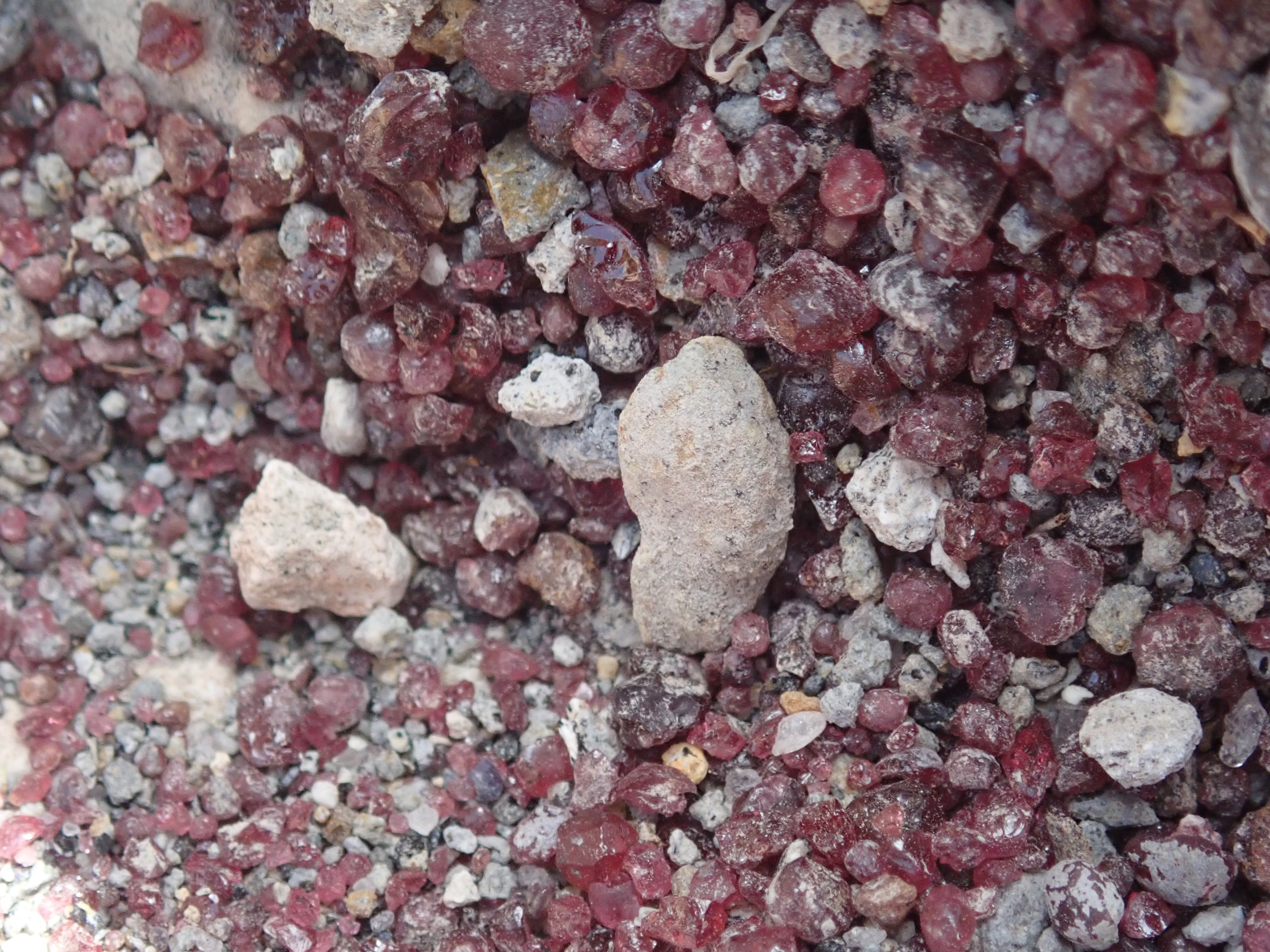
The garnets are almandine garnets and found loose in the creeks and gullies as part of a placer deposit.
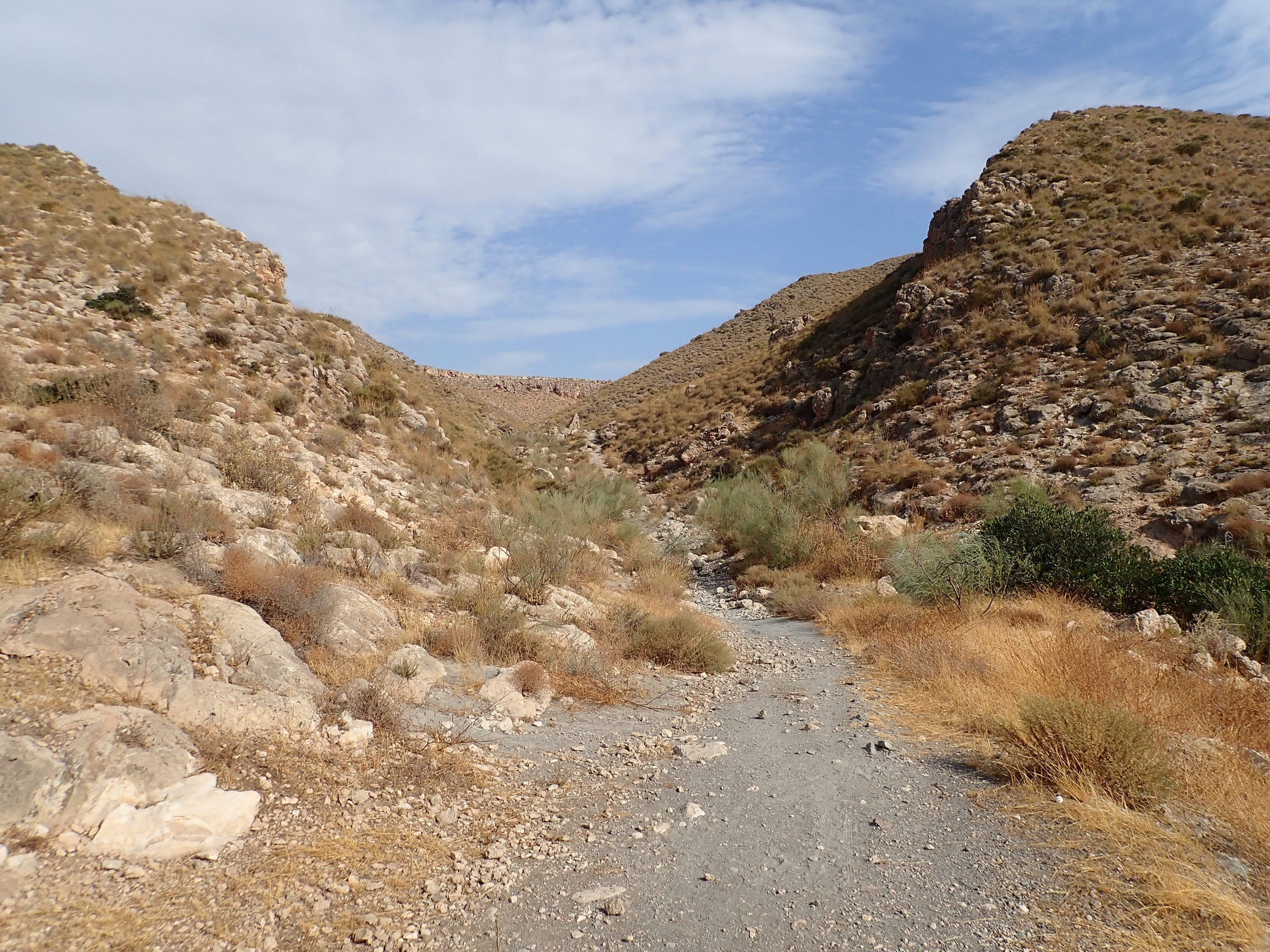
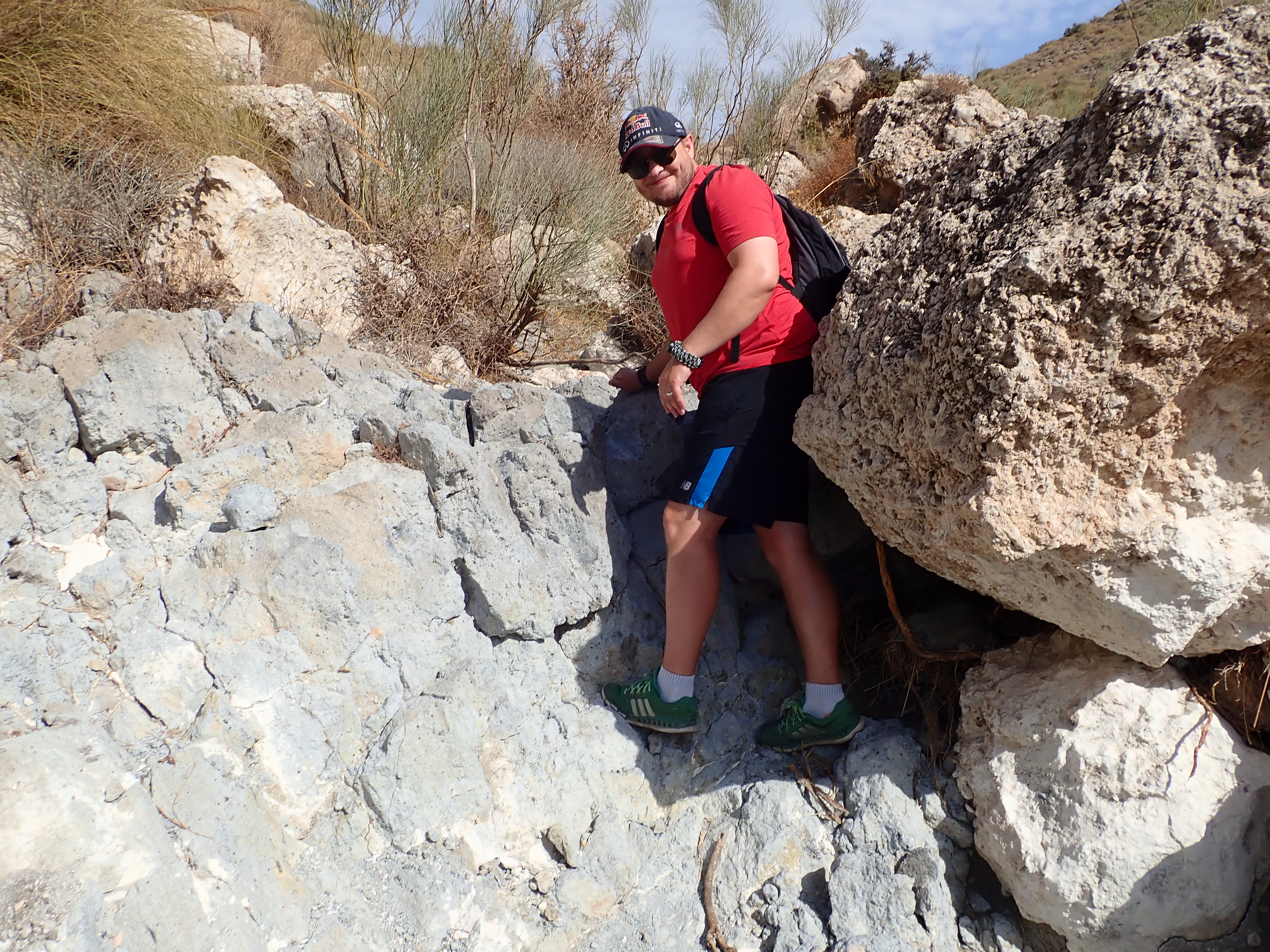
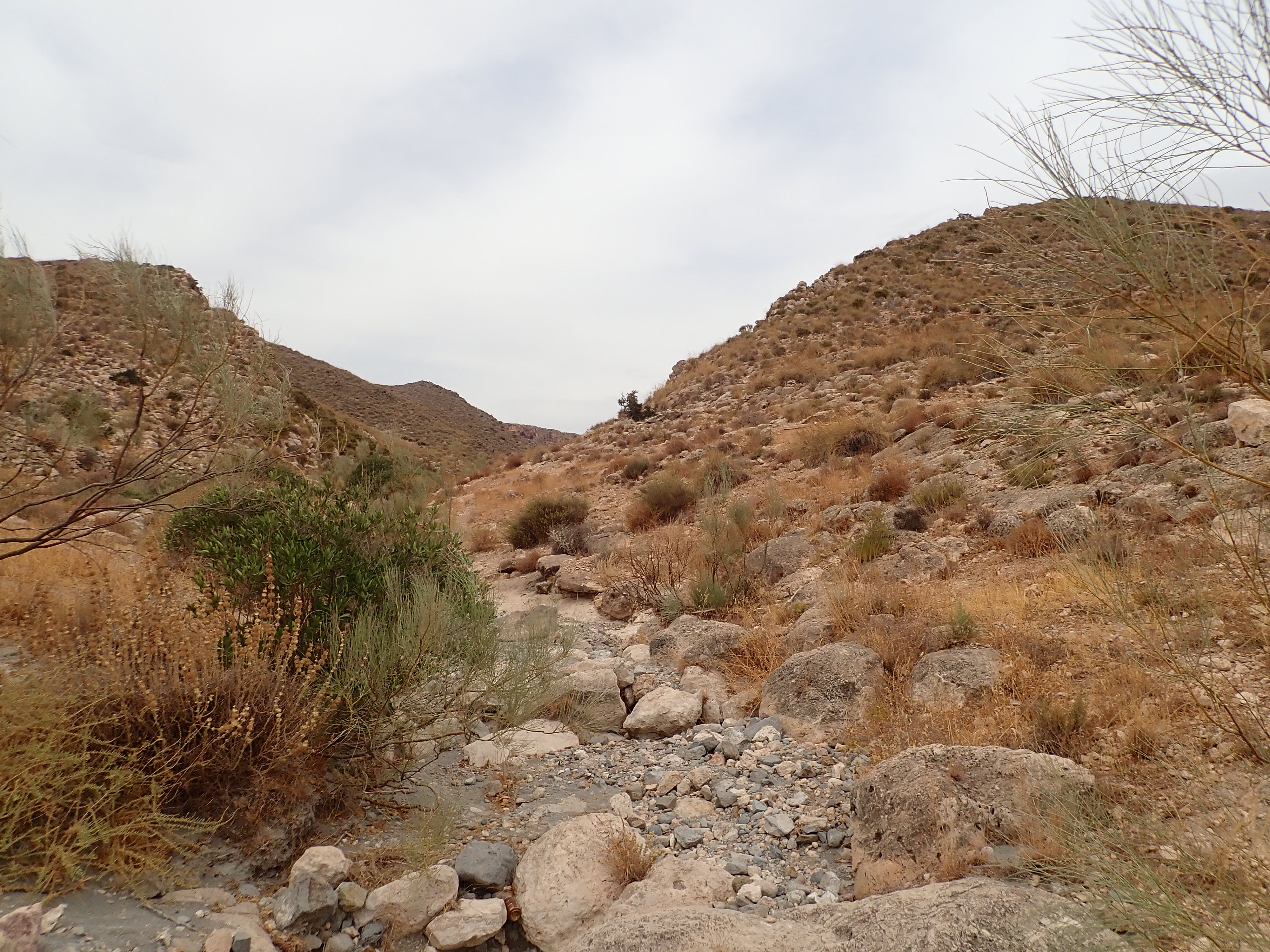
The area used to be a garnet quarry in fact, though I suspect the garnets were for industrial use. They are not large (we didn’t find any bigger than about 8mm) or gemstone quality (most are cracked with varying degrees of transparency), but you can see the dodecahedral (or possibly trapezohedral?) crystal structures and the colour is quite pretty (a reddish-pink).
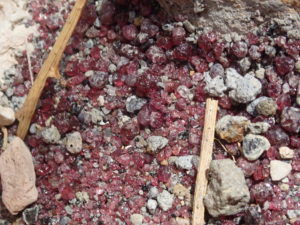
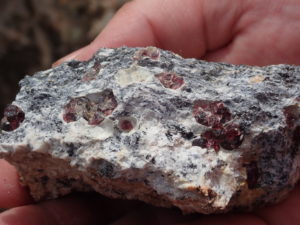
If you don’t like garnets, then you could always look for fossils. That’s right, the crater is ringed by a fossilized reef with thrombolites. Isn’t that crazy?! Volcanic, metamorphic and sedimentary processes all in the one spot! In addition to garnets and limestone, we also found what we think is cordierite (little opaque, blueish crystals), possibly sillimanite (clear, vitreous crystals) and some kind of biotite-rich metamorphic rock (schist/gneiss).
We. Lost. Our. Minds.
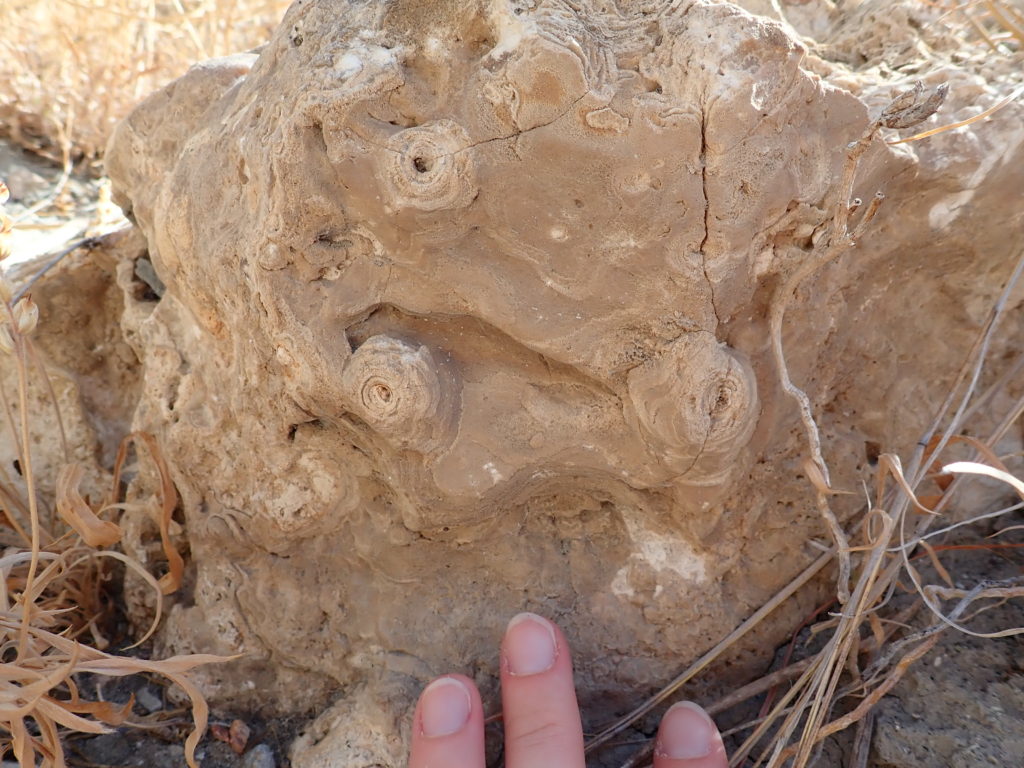
I suspect is why we became so dehydrated; running back and forth around the crater, climbing hills and pushing through brush. I lost Kane at one point and had to climb a hill to find him; which I was very cross about. Bad Kane! In his defense, it is very easy to loose people in the gullies so stick together! We are definitely going back on our next visit.
For more detail about the geology of the region check out these resources:
- A Field Guide to the Neogene Sedimentary Basins of the Almería Province, SE Spain
- https://www2.le.ac.uk/departments/geology/geoblog/the-second-year-field-trip-to-almeria-se-spain-by-jack-lacey
- https://www.mindat.org/loc-251976.html